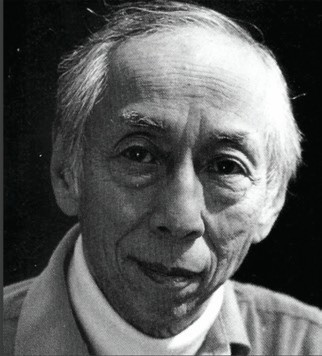He contributed significant elements to many science fiction films and TV shows, yet you’d probably he hard-pressed to put a face to the name. Wah Chang - not to be confused with 1980s popular beat combo Wang Chung of ‘Dance Hall Days’ fame! - was a 20th Century movie and TV prop builder, and special effects expert. Not only did he design the iconic communicator and Tricorder props for the 1960s Star Trek TV series, but he also created the Horta rock monster!
That’s only scratching the surface of Chang’s notable achievements - he got his start in the 1950s on B-movies like Cat-Women of the Moon (1953), Monster From Green Hell (1957), and The Black Scorpion (1957), but soon found a natural home for his work on 1960s TV, not only in Star Trek but also in the likes of The Outer Limits and Land of the Lost.
Wah Ming Chang was born in Honolulu in Hawaii in 1917 (Hawaii didn’t become the 50th State of the US until 1959), but his family moved to San Francisco by the time he was three years old where they opened a tea room on Sutter Street. Their cafe became a favourite spot for the city’s bohemians, exposing the young Chang to art and artists at a very young age. He soon took to copying the artists around him by sketching portraits of tea room visitors on the back of the store’s menus.
His mother, Fai (or Fae) Sue Chang, was also artistically inclined, graduating from the Berkeley California School of Arts and Crafts, with a special focus on fashion design and etching.
Chang’s mother died in 1928, when he was just 11, leaving the boy in the reluctant care of his father, Dai Song. Song felt unable to provide the artistic education the boy needed. Print-maker and theatre designer James Blanding Sloan, a regular at the Chang tea rooms, was asked by Song to become young Wah’s legal guardian, trusting Sloan to put him on the right path to success.
Chang quickly became part of the Sloan family, working as an assistant to his adoptive father and exhibiting his own works despite his youth. He took part in Sloan’s popular marionette shows and performed in puppet productions as part of the Hollywood Bowl Ballet and during the Cavalcade of Texas (working on this project in 1936, he first met Glenella Taylor, whom Chang would marry in 1941 - when the law frowned on relationships between someone Chinese and someone Caucasian).
By the mid-1940s, Chang was a full partner with Sloan in the East-West Film Company, with the pair bringing their extensive experience and skill with puppetry and theatre production to a filmed performance of ‘Pick a Bale of Cotton’ by blues and folk singer Lead Belly, and the controversial anti-war animated short The Way of Peace (1947, written and directed by Frank Tashlin, and produced for the American Lutheran Church), which featured complex miniature sets and effects.
DISNEY AND GEORGE PAL
Overlooked for credit much of the time, piecing together Wah Chang’s career and productions can be difficult - on many of his earliest projects (and some later ones) he went without due credit. In 1939, aged 21, Chang became the youngest member of the effects and model workshop at the Walt Disney Studio, which led to his earliest mainstream work on Pinocchio (1940), Fantasia (1940), and Bambi (1942).

Wah Chang in his later years